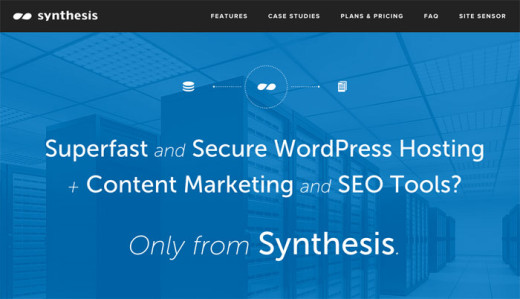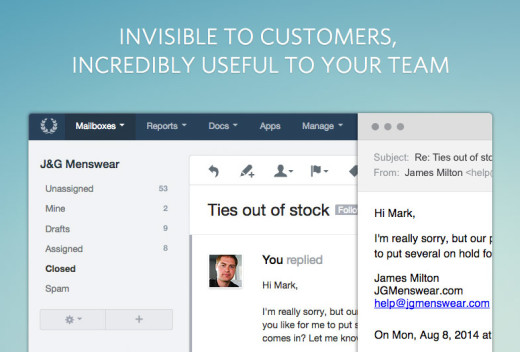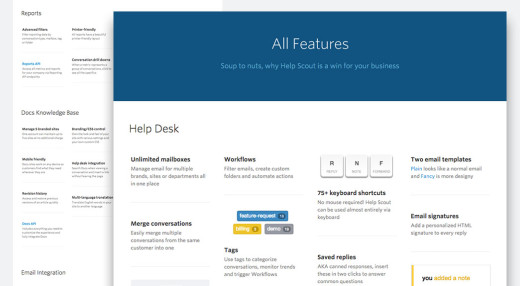
A well-defined problem is half solved. But getting there is harder than you’d expect.
Enter the world of value propositions. Projecting “Here is why you should buy from us” seems easy from the company’s perspective: it already knows its product and may be over-valuing the perceived benefits. The reality is there are all sorts of inertia to overcome.
Communication is hard, and it needs to cascade to every level if you want to be persuasive. Slapping up a new headline doesn’t count.
Let’s take a look at what does.
When Simple is Overrated
“Blandvertising” happens via the best practices echo-chamber, in lieu of actually understanding what a successful outcome looks like for the customer.
We generally prefer simple over complex, but that doesn’t mean simplicity commands the most attention, or even speaks to the customer’s desired result. A former case study on Marketing Experiments showcases a test where that was definitively true. The two headlines below were tested against each other:
- Simple Fix for Blown Head Gaskets
- Repairs Blown Head Gaskets in Just One Hour
Other meaningful changes were made (communication is full-spectrum), but the second example contributed to a 58 percent lift in conversion. The complexity of the “fix” was meaningless; getting it done in an hour was worth noticing.
Bland always goes bust. Start with determining what your customers want to achieve. What specific outcome sounds like success? Talk to them, define it well, and state it plainly—that’ll be music to their ears.
Sell Like You Mean It
A compelling value proposition has a number of responsibilities.
Shockingly, telling your customers to “just do it” isn’t one of them. Slogans are great boardroom meeting material when you have a billion-dollar advertising budget. Not so much for the rest of us.
Here’s what you want:
- Relatable results: The compelling context. Remind customers of their current headaches and explain how their situation will improve. Show how other customers have found success with your product and show a clear before and after—one that feels attainable and speaks to the outcome they want.
- Clear-cut benefits: Getting specific means leaving little to the imagination. In lieu of selling “simple proposal software,” Bidsketch promises to help you “create professional looking client proposals in minutes.”
Define real value
Value is what the customer gets, and in order to state that well you must understand why customers are using your product. Is your reporting being used to drill down on data or to give a convincing presentation to the boss? That affects how you present it to prospects.
Place priority on your point of difference, which is the reason why your solution is better than the competition’s in some notable way. What can your solution do that the others can’t? Synthesis touts publishing tools that other webhosts don’t have.
Getting your point across requires catching and keeping a customer’s attention. Let’s talk about that.
Make It Plain as Day
“Where am I? What is this?” That’s the starting point of every new visitor who hits your site. No wonder eye-tracking studies consistently show that headlines take priority; they are the highway signs for where a prospect wants to go next.
Elevator pitch length may be great for most of the page, but information above the fold must move quicker than a pedestrian in New York City. On the web people speed by even things they care about. Could you communicate value to someone walking by on the street?
Details matter. Each element contributes, which means “Get Started in Minutes” often wins over the generic “Sign Up” button.
Yes, customers will scroll, but the only guarantee you have are the items up top, doing all the heavy lifting. Don’t stress over silver-bullets, but make each piece of the puzzle count.
Why This Over That?
In marketing, “motivation” is often said to be equal to the perceived benefits minus the perceived costs. Differentiation helps here, but only when you’re different in a way that speaks to a job customers want to do.
Help Scout is entirely invisible to the customer. We showcase this feature widely on our site because it lets our customers handle email support without losing the personal touch, which is often what they want most from a help desk.
Points of parity, on the other hand, sell on expectations—features your customers expect to see. You can recite “features tell, benefits sell” until you’re blue in the face, but sometimes a wrench is a wrench. Tools can be judged on their specifics, too.
We have an “all features” page for those needing to mark off features seen as cost of entry. Industry-standard mentions are fine, but generic features only go so far (“Our pencils come with erasers!”).
Saved replies in a help desk aren’t just common, they’re expected. You may equal competitors in some of these areas, but for the most important outcomes, you need to shine.
Use Your Customers’ Language
Catch-all language is the antithesis of communicating value.
Many of our marketing pages reference “emails slipping through the cracks,” “stepping on each other’s toes,” and “headaches using Gmail.”
We use those phrases because our customers use those phrases. You first write copy around the desires and outcomes you expect to hear; you revise it around the desires and outcomes you actually hear. You want potential customers to say, “It’s like you read my mind!”
There’s no skipping this step, so talk to your customers. Paying close attention to feedback is the genesis of many mission-critical insights, and how customers speak about their problems is one of them.
Strengthening Your Case
Before becoming an overused platitude, “Satisfaction Guaranteed” was a heck of a promise to seal the deal. When projecting value, consider a few key supporting players that won’t ever lose their luster.
Here are some timeless approaches:
Customer testimonials
People like hearing from other people who have made the switch. The problems are relatable and the outcomes feel real. Using faceless, generic pull-quotes will ruin the potential, however. Most companies admit defeat too early and use, “XYZ Host is so fast!” Keep looking.
Assurance
Assurances are about seeing a feasible out. In essence, you’re saying, “Even if it all goes wrong, here’s how you’ll be set right.” Whether that means, “Fall in love with it or send it back in 30 days, no charge!” or “With a 30-day free trial, there’s no risk,” stick to showing that they will walk away taken care of.
Social proof
Look at the companies your customers most relate to and those they most admire. Halo effect would argue for the most recognized customers possible, but outcome is the name of the game—who would your customers love to emulate?
Micro-touch elements
The last to come into play. I signed up for an app recently that shared support response times near checkout. That doesn’t have the gripping persuasion needed for the homepage, but at the perfect point it does some heavy lifting.
A Responsibility to Communicate Well
Marketing makes clear the truths a customer needs to hear. Without a compelling value proposition, those who might benefit most will walk right on by.
The job isn’t done just because you’ve built a newer, better product. Unless the perceived gains far outweigh the losses, customers will stay static. You influence how customers perceive these gains and losses. One of the best ways to demonstrate value is to know better than anyone else what life is like before and after your product. You must convince customers that the outcome is true and well worth the effort.
As the saying goes, price is what you pay and value is what you get.
Communicating value means clearly defining why they should buy.
Read Next: Why silence is a startup killer
Image credit: Unsplash
This post first appeared on Helpscout
Get the TNW newsletter
Get the most important tech news in your inbox each week.










